Shoulder stabilization surgery is a significant step toward restoring joint stability and function, but the journey doesn’t end in the operating room. The success of surgery hinges largely on a patient’s commitment to post-operative care and rehabilitation. A well-structured recovery plan helps ensure proper healing, regain mobility, and minimize the risk of future dislocations.
This guide provides a detailed look at what to expect after shoulder surgery, including timelines, exercises, and practical recovery tips.
The Phases of Recovery
Recovery from shoulder stabilization surgery generally occurs in four main phases. Each phase has specific goals and restrictions designed to protect healing tissues and gradually restore strength and function.
Phase 1: Protection and Immobilization (Weeks 0–4)
Goals:
- Protect surgical repairs
- Manage pain and inflammation
- Begin gentle motion under guidance
What to Expect:
- Dr Kruse requires the use of a sling for 2-3 days after surgery and then it is used as needed for comfort for 2-4 weeks, sometimes longer depending on the procedure
- Pain and swelling managed with ice, medications, and rest
- Passive range-of-motion exercises may begin under therapist supervision
Key Tips:
- Sleep in a semi-reclined position for comfort
- Avoid any overhead, lifting, or reaching motions
- Keep the incision area clean and dry
Phase 2: Early Rehabilitation (Weeks 4–8)
Goals:
- Restore passive and active-assisted range of motion
- Begin gentle muscle activation
- Maintain scapular mobility
Typical Exercises:
- Pendulum swings
- Table slides
- Assisted external rotation
- Scapular retraction and depression drills
What to Avoid:
- Heavy lifting or resistance training
- Forceful stretching or any movement that stresses the repair
Phase 3: Strengthening (Weeks 8–16)
Goals:
- Regain muscular control and endurance
- Restore active range of motion
- Begin light resistance training
Common Exercises:
- Theraband rotations (internal and external)
- Isometric holds
- Resistance band rows
- Wall push-ups
Patients typically notice improved shoulder function during this phase, though full strength has yet to return.
Phase 4: Advanced Strengthening and Return to Activity (Months 4–6+)
Goals:
- Return to normal activities and sport-specific movement
- Build dynamic shoulder stability
- Prevent re-injury
Program Focus:
- Overhead pressing (as tolerated)
- Plyometric drills (for athletes)
- Functional strength and conditioning
- Reintroduction to throwing or overhead sports
A full return to contact sports or heavy labor may be cleared around 5–6 months post-op, depending on the patient’s progress and type of surgery.
Monitoring Progress
Every recovery is unique, but certain milestones help measure success:
- 4 weeks: Sling removed, passive range nearly restored
- 8–12 weeks: Active motion regained, early strengthening begins
- 3–4 months: Most daily activities resume with minimal discomfort
- 6 months: Cleared for sports or demanding physical tasks
Regular follow-ups with your surgeon and physical therapist ensure you stay on track.
Managing Setbacks and Challenges
Pain and Stiffness
Some discomfort is normal, especially during early therapy. Persistent or sharp pain should be discussed with your provider. Gentle stretching and regular movement help minimize stiffness.
Scar Care
Once the incision is fully closed, scar massage and silicone gel can improve healing and appearance.
Emotional Recovery
It’s common to feel frustrated or impatient. Staying engaged in the rehab process and celebrating small gains helps maintain a positive mindset.
Frequently Asked Questions
1. How long will I need physical therapy?
Most patients attend therapy for 3 to 6 months, with frequency decreasing over time as independence increases.
2. Can I drive while wearing a sling?
No. Driving is unsafe while immobilized. Wait until your surgeon clears you, usually once you have regained enough motion and control.
3. Is it normal to feel popping or clicking during recovery?
Mild clicking is common and usually harmless, especially early in rehab. However, persistent or painful clicking should be evaluated.
4. What happens if I skip rehab?
Skipping rehab significantly increases the risk of re-injury, stiffness, and poor long-term outcomes. Consistency is key.
5. Can I return to sports at full intensity?
Yes, but only after you’ve regained full strength, motion, and stability—typically around 5 to 6 months post-op. Clearance from your surgeon is essential.
